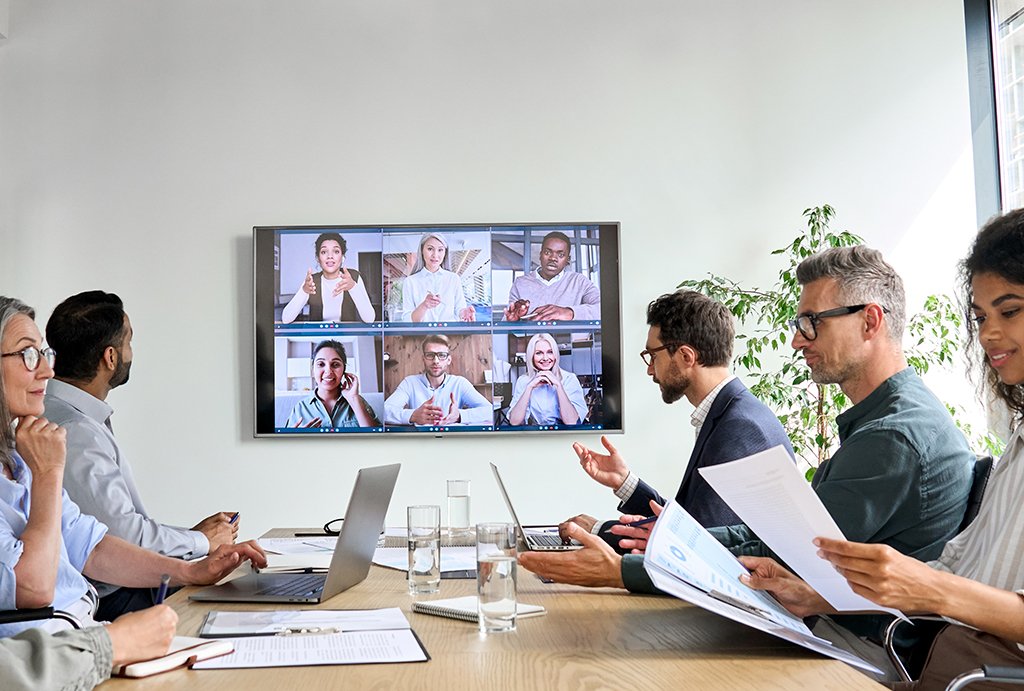Understanding the Top Five Advantages and Disadvantages of Video Conferencing

Video conferencing, in today’s world, has become an intrinsic aspect of day-to-day business. It is empowering employees to stay connected, communicate better and collaborate from anywhere. Understandingboth the advantages and disadvantages of video conferencing is essential in navigating the modern landscape of communication.
On one hand, video conferencing offers unparalleled global connectivity, enabling real-time interactions and collaboration across distances. It saves valuable time and resources by eliminating the need for travel and fosters enhanced communication through visual cues. The flexibility it provides allows for a balance between work and personal commitments, while features like document sharing enrich collaboration.
However, this convenience comes with few challenges. Technical issues can impede smooth communication, security concerns require vigilant measures and the absence of a personal touch can affect relationship-building. Moreover, prolonged virtual interactions can lead to fatigue and reduced engagement and the potential for distractions adds another layer of complexity. Recognizing and effectively managing these pros and cons are pivotal in making video conferencing a productive and satisfying communication tool.
This blog explores the top five advantages and disadvantages of video conferencing that a business must consider before choosing to make it a part of its everyday process.
Advantages:
Global Connectivity: Video conferencing allows people from around the world to communicate in real-time, overcoming geographical barriers and enabling seamless collaboration among remote teams, clients or partners.
Cost and Time Savings: Video conferencing eliminates the need for travel, reducing associated costs such as transportation, accommodation and meals. It also saves time that would otherwise be spent commuting, allowing for more efficient use of resources.
Enhanced Communication: Video conferencing provides visual cues like facial expressions and body language, improving the clarity of communication compared to audio-only methods. This can lead to better understanding and reduced misunderstandings.
Flexibility and Convenience: Participants can join video conferences from their preferred locations, making it easier to balance work and personal commitments. This flexibility can improve work-life balance and job satisfaction.
Document and Screen Sharing: Video conferencing platforms often include features for sharing documents, presentations and screens. This facilitates collaborative work, allowing participants to review materials simultaneously and make real-time edits.
Also Read:- Everything you need to know about using zoom video conference
Disdvantages:
Technical Issues: Video conferencing requires a stable internet connection and compatible devices. Technical glitches like poor audio/video quality lag or dropped calls can hinder effective communication.
Security Concerns: Video conferences can be vulnerable to hacking, unauthorized access or data breaches. Ensuring the security of conversations and shared information is crucial, especially for sensitive discussions.
Lack of Personal Connection: While video conferencing offers visual cues, it may still lack the personal touch of face-to-face interactions. Building rapport and establishing relationships might be more challenging in virtual meetings.
Meeting Fatigue: Constantly being on video calls can lead to fatigue or burnout. The feeling of being under constant observation and the cognitive strain of virtual interactions can be tiring over time.
Distractions and Multitasking: Participants might be tempted to multitask during video conferences, which can lead to reduced engagement and comprehension. Additionally, background distractions in participants' environments can negatively impact the meeting experience.
The advantages and disadvantages of video conferencing can vary based on factors like the quality of the platform used, the participants' familiarity with the technology and the nature of the discussions being held. Keeping the above-mentioned points in mind, you can choose to use video conferencing in such a way that it yields the best results for your business as well as employees.
RECENT POSTS
Making a hybrid workplace interoperable
How to develop a hybrid workplace strategy?
WEBEX, MS TEAMS OR ZOOM.WHICH VIDEO CONFERENCING PROVIDER IS RIGHT FOR YOU?
What is AV system integration? Is it only for big corporations?
Need for a smart classroom – How to design one?
How to set up a meeting room - things to consider before getting one
6 REASONS TO USE SD-WAN TO IMPROVE NETWORK SECURITY
6 Best practices to undertake after implementing a wi-fi network.
Hybrid work – is it burning out your employees too?
Secure Access Service Edge (SASE)
Cisco Webex-Revolutionalising Remote Learning!